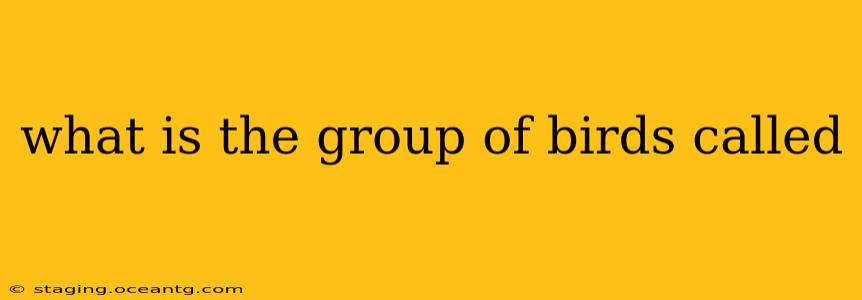The answer to "what is a group of birds called?" isn't a simple one. Unlike some animals where a collective noun is universally accepted (a pride of lions, a flock of sheep), the term used to describe a group of birds depends heavily on the species of bird and sometimes even the context. This guide will delve into the fascinating world of avian collective nouns, exploring the most common terms and their nuances.
What are the most common collective nouns for birds?
The most common collective noun for birds is a flock. This term is widely applicable and generally understood, but it doesn't capture the specificity that ornithologists and bird enthusiasts often seek. Think of it as a general umbrella term. Using "flock" is perfectly acceptable in most casual conversations and even many written contexts.
What other collective nouns are there for birds?
Beyond "flock," many other collective nouns exist, each often associated with a specific bird or behavior:
- A murder of crows: This is perhaps the most well-known specific collective noun, evoking the slightly ominous image of a large group of crows.
- A parliament of owls: This sophisticated term reflects the owl's perceived wisdom and deliberation.
- A business of ferrets: While not strictly a bird, it shows how context influences naming conventions. This highlights the idea that collective nouns aren't always strictly logical.
- A charm of goldfinches: The delicate and enchanting nature of goldfinches is reflected in this charming collective noun.
- A kaleidoscope of hummingbirds: This vibrant term perfectly captures the dazzling array of colors and quick movements of hummingbirds.
- A flight of birds: This term often refers to birds in flight, particularly a large group migrating together.
Why are there so many different names for groups of birds?
The variety in collective nouns for birds stems from a combination of factors:
- Historical influences: Many of these names have evolved over centuries, often reflecting cultural perceptions and observations of bird behavior.
- Species-specific behaviors: The term used might reflect the bird's typical behavior, such as the "murder" of crows reflecting their sometimes-noisy and intimidating gatherings.
- Poetic license: Some names are simply more evocative and poetic than others, making them preferred choices in certain contexts.
Are there any less common collective nouns for birds?
Yes! There are many less common, often more whimsical, terms. Some examples include: a congregation of plovers, a down of geese, a host of sparrows, and a team of ducks. The usage of these less common terms often depends on the writer's style and the specific context.
How do I choose the right collective noun for birds?
The best approach is to consider the species of bird and the context. While "flock" is a safe bet in most situations, using a more specific term, where appropriate, can add richness and depth to your writing or conversation. If you're unsure, sticking with "flock" is perfectly acceptable.
What are some resources for finding more collective nouns for birds?
You can find more collective nouns for birds in ornithological dictionaries, online bird encyclopedias, and various language resources. Many websites and books dedicated to birds provide comprehensive lists and explanations. Remember, however, the application of many is informal and contextual.
This comprehensive guide provides a solid foundation for understanding the varied and fascinating world of collective nouns for birds. Remember to consider the species and context to make the most effective and engaging choice.
